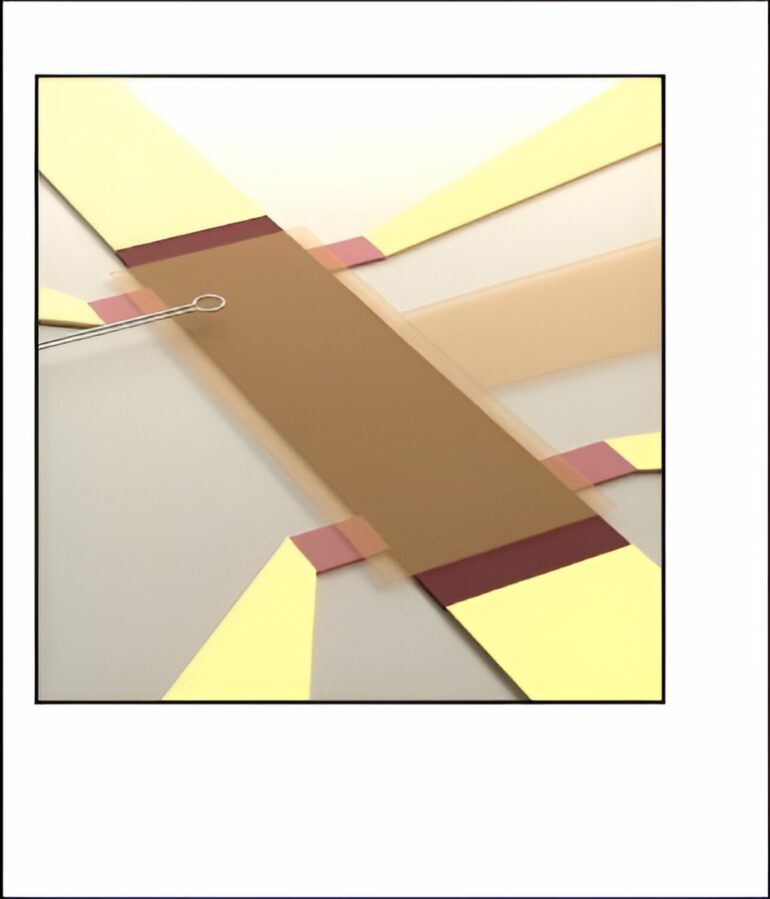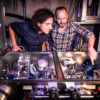Topological protection provides unprecedented robustness of physical phenomena against all kinds of perturbations; but in doing so, it exercises topological censorship by hiding all kinds of interesting and important microscopic information. Recent experiments have collected microscopic information precisely of the kind hidden by such topological censorship.
The work by Douçot, Kovrizhin, and Moessner provides a detailed microscopic theory that goes beyond such topological censorship. It not only identifies an unexpected phenomenon—the meandering edge state carrying topologically quantized current—at variance with common expectations, but also identifies mechanisms that allow for tuning between qualitatively different microscopic implementations corresponding to one and the same topologically protected global quantity.
The research is published in the journal Proceedings of the National Academy of Sciences.
Introduction: Topological physics
The Nobel Prize in Physics 2016 was awarded to David J. Thouless, F. Duncan M. Haldane, and J. Michael Kosterlitz “for theoretical discoveries of topological phase transitions and topological phases of matter.”
A key prediction behind this Nobel Prize was that, at very low temperatures, atoms and electrons can form new exotic topological states of matter. These are distinct from the usual states of matter, which include crystals, gases, and liquids.
These novel states were dubbed “topological” because their special properties arise from the geometric structure of their quantum wavefunctions, which in turn render these states extremely robust.
In other words, to destroy these states, one would need to “unwind” the knots in their wavefunction. This robustness underlies the phenomenal exactness of the quantization observed in the quantum Hall effect, the experiment that founded the field in the 1980s (Nobel Prize for Klaus von Klitzing, 1985), and which has led to a redefinition of the standard of resistance in metrology.
Topological protection implies topological censorship
Scientists became particularly excited about this so-called “topological protection” because it may be used (as famously proposed theoretically by Alexei Kitaev) in future quantum computers to protect quantum information from errors. This has resulted in new theoretical designs for quantum computers. These designs are currently being explored by experimental labs and industry.
However, topological protection also implies “topological censorship.” In other words, the topology puts a veil over the local properties of these states, which makes it difficult to test them on a deeper level using various experimental probes.
What one usually observes in experiments are global universal properties, such as the quantized resistance. Topological censorship therefore hides entire classes of interesting and potentially useful information from the observer. One can draw a comparison with a black hole, whose internal properties are hidden from us by the event horizon.
Topological censorship is useful as it ensures that even oversimplified theories ultimately provide topologically correct results, at the potential expense of microscopic correctness for any given experiment. A simple such theory involves the notion that all current in the quantum Hall effect is carried exclusively by states hugging the boundary (edge) of the experimental sample.
Indeed, this is the standard theoretical picture of the quantum Hall effect. This picture has been tested in many experiments and very often accounts for their observations.
However, new exciting experiments by groups at Stanford and Cornell made surprising observations that challenge this standard picture. The latter found that the current in what is known as a Chern insulator can be tuned from flowing along the edge, as in the standard picture, to having a much stronger bulk character.
This directly challenges topological censorship: the quantized current can be tuned to flow in the bulk). In the paper in Proceedings of the National Academy of Sciences, a collaboration of researchers at MPI-PKS (Dresden) and Paris have provided an analysis that theoretically lifts the veil of topological censorship: they reproduce the experimental results very well.
Their work identifies mechanisms that allow bulk transport. In particular, they identify a meandering conduction channel capable of carrying quantized bulk current.
They find that the “existence of states which have the visual appearance of a narrow edge channel [is not required]. Rather, a broad and meandering channel, resembling a stream flowing in its marshy floodplain rather than in a sterile canal, is accommodated perfectly satisfactorily.”
The authors of the theoretical work say in their paper, “Our work addresses the question: ‘Where does the, famously quantized, charge current flow in a Chern insulator?’
“This question received considerable attention in the context of the quantum Hall effect, but the progress there has been hampered by the lack of local probes, and no consensus has emerged so far. The fundamental problem is the following: topological protection is excellent at hiding local information (such as the spatial distribution of the current),—a phenomenon that we call topological censorship.
“Two recent experiments, which used local probes to determine the spatial current distribution in Chern insulator heterostructures (Bi,Sb)2Te3, have remedied the dearth of experimental data in the case of the anomalous quantum Hall effect. These experiments reached unexpected, albeit very different, conclusions. Here, we provide the theory explaining one of these experiments.”
Background: Experiments on Chern insulators
Chern insulators were predicted in 1988 by Duncan Haldane, one of the recipients of the 2016 Nobel Prize, and considered a mathematical curiosity until they were realized experimentally in 2009. Crucially, they do not require a magnetic field to realize the quantum Hall effect.
In the new experiments with Chern insulators, it was possible to detect local magnetic fields using a SQUID magnetometer, and by doing so, map the distribution of the current flowing through the sample. According to the standard picture, the current would have been expected to flow strictly along the edges of the sample, but what Katja Nowack et al. found was quite remarkable. They observed the electron current flowing everywhere, depending on the voltage applied to the system.
These experimental observations were at odds with the standard picture of the quantum Hall effect, and for some time there had been no theoretical explanation of this behavior. The work of the three theorists offers such an explanation. Their theory explained the distribution of the current flow measured by the Cornell group, thus confirming that the current in a Chern insulator can indeed flow inside the sample.
This experimental and theoretical work begins to put an end to the topological censorship, which ruled for nearly half a century, and calls for new experimental investigations of topological states of matter.
More information:
Benoit Douçot et al, Meandering conduction channels and the tunable nature of quantized charge transport, Proceedings of the National Academy of Sciences (2024). DOI: 10.1073/pnas.2410703121
Provided by
Max Planck Society
Citation:
A detailed microscopic theory: Lifting the veil of topological censorship (2024, September 25)



